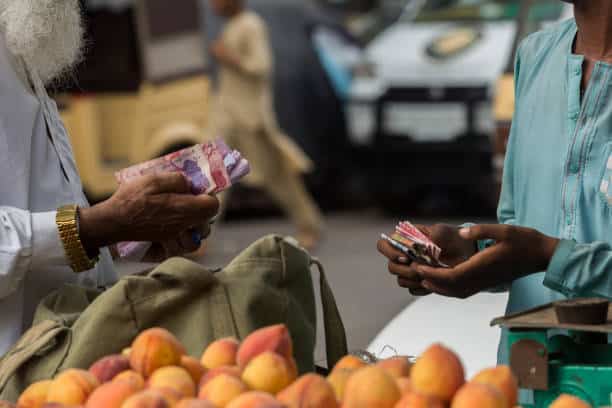Pakistan has fintechs, apps, and wallets in abundance. But what many seem to lack is the one thing that truly matters—alignment with the people it is meant to serve.
Every few months, a new digital banking product enters the market. Many are backed by global expertise and sleek interfaces. But the real test is not in how polished a product looks. It is how well it understands the people.
In Pakistan, trust in financial technology is being shaped by cultural memory, everyday experiences, and the perceived risks of going digital.
Let us begin with the facts. Pakistan has 211 million bank accounts. Of these, 17 million are mobile banking app users, 11 million use internet banking, and 3 million are e-wallet users from Electronic Money Institutions (EMIs). Then there are 59 million mobile wallet users via branchless banking platforms. Yet, less than half of these accounts are active in any given 30-day period. Most users log in, transfer funds, and cash out immediately. This is not sustainable adoption; it is cautious engagement.
Why? Because the fear of fraud and technical failure is real. Customers are not only worried about glitches in a journey as vital as financial, they are worried about losing money they cannot afford to lose. Even a PKR 50,000 fraud incident can be financially devastating for someone living month to month. And when there is a lack of human support and a low sense of accountability, digital channels feel risky. People queue up at branches while letting their ATM cards sit unused and expire, not because they do not want to change, but because they cannot afford for ‘change’ to go wrong.
But this is also where real progress has begun. Initiatives like Raast are building secure, real-time payment rails. Platforms like branchless banking have introduced millions to digital wallets. Microfinance institutions have brought digital finance into some of Pakistan’s most remote and underserved communities. And throughout, the State Bank of Pakistan has led with an approach that combines innovation with financial discipline, helping balance growth with consumer protection.
It is this commitment and solid foundation that gives Pakistan its potential and we are building on it. When Mashreq prepared to enter Pakistan, we did not begin with assumptions. We began with immersion. We listened to what people needed and where they felt digital services fell short. We observed what builds confidence, and what breaks it.
Trust in Pakistan is built differently. A shopkeeper, no matter how many services he offers, is not a banker. He is juggling mobile top-ups, grocery sales, and wallet withdrawals, often for multiple fintechs at once. You will find multiple branchless banks and fintech branded boards outside the same store. But you will not find ownership. For customers, this is confusing at best and unsafe at worst. They want to talk to someone who represents their bank and not just someone who happens to offer financial services as a side gig.
We also saw how certain digital techniques or tools, while efficient in theory, can backfire in practice. A simple task like facial verification can break down under poor lighting, unstable internet, or unfamiliar gestures. What was meant to feel smart, creates friction instead.
Yet, there is no shortage of innovation in Pakistan. From food delivery apps to fashion e-commerce platforms, other sectors have built digital ecosystems that anticipate needs, personalize experiences, and build lasting loyalty. They show us what is possible. The challenge for financial services is to translate those lessons into trust-led design, without compromising on security, compliance, or local nuance.
To move from digital access to true adoption, Pakistan’s financial sector must prioritize three national actions.
First, localized presence. Smart banking kiosks and micro-branches, designed around community needs, can provide the reassurance people seek. These should complement digital journeys, not replace them, offering the option to speak to a real person during key moments like onboarding, dispute resolution, or product guidance.
Second, infrastructure modernization. Legacy systems still limit how efficiently and securely digital banks can operate. A task force led by the regulator, bringing together fintechs, incumbent banks, and technologists, could help align around scalable, interoperable infrastructure that is future-ready.
Third, national digital finance education, led by champions for scalability. We need a multi-stakeholder campaign to build awareness around fraud prevention, mobile app usage, data privacy, and the long-term benefits of saving and investing digitally. These messages should be delivered in regional languages and tailored to different demographics, from students to pensioners.
This is not criticism of what exists; it is a call to build on it. The work done so far has been meaningful. But if we want to bring millions more into the fold, we must shift from seeing digitization as a technology rollout to viewing it as a trust-building exercise.
Localization is not a roadblock. It is the strategy that unlocks scale. The true test of digital banking in Pakistan will not be how many accounts we open, but how many people come back and choose to stay. It will be defined by the day a first-time user makes a transaction without second-guessing. When a small business owner decides to grow using only online tools. When digital feels not like a risk, but like a natural ally.
That is the future we are building toward. Together—with regulators, with partners, and above all, with the people of Pakistan.
By: Muhammad Hamayun Sajjad, CEO Mashreq Pakistan


